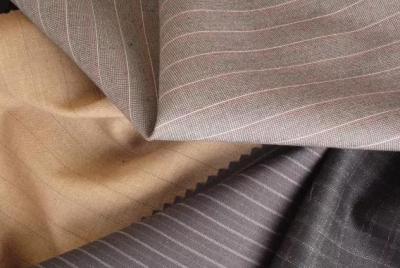1. Classification of textile printing and dyeing auxiliaries
The components of textile printing auxiliaries are roughly divided into two categories, functional auxiliaries and auxiliaries for surfactants. The former uses different compounds to play a functional role during processing, such as: oxygen bleaching stabilizer, fixing agent, color repairing agent, defoaming agent, softening agent, water and oil repellent finishing agent, flame retardant, anti-wrinkle finishing agents, etc. They can achieve the desired effect only in a certain amount.
The other type is surfactant used as dyeing auxiliaries, such as penetrants, detergents, levelling agents, scouring agents, foaming agents, dispersants, and emulsifiers. They actually play the roles of wetting, emulsifying, dispersing, solubilizing, which are the specific manifestations of the comprehensive effect or single effect of their functions. Therefore, it is fully in line with the theory of surfactants, and it is necessary for you to learn the knowledge of surfactants.
Surfactants form micelles in the solvent, and the concentration of micelles is called the critical micelle concentration, or c.m.c for short. If the number of micelles with a concentration exceeding c.m.c increases, the micelles become larger. The wetting effect of surfactants can occur below the c.m.c concentration, while the emulsification, solubilization, dispersion, and cleaning effects are all functions of micelles, so it must be above the c.m.c concentration to have an effect.
2. How much should the amount of textile printing auxiliaries be
Generally, the c.m.c value of pure surfactants does not exceed 0.2g/L, while the amount of surfactants in most commodities is only 15-20%, and plus other auxiliary materials, the total content is 40%. Therefore, the c.m.c content of the product probably does not exceed 1g/L. In other words, the concentration of printing and dyeing auxiliaries must at least exceed 0.5g/L before micelles begin to form. When the concentration is higher than this concentration, the amount of micelles increases and the effect is significant. Therefore, the amount of dyeing auxiliaries can't be reduced arbitrarily, especially the cheap cleaning agents on the market, whose effective ingredients are only 5%, a large amount of which is sodium sulfate, etc., and if they are used less, the cleaning effect can't be achieved at all. This is the reason why the amount of soap agent specified in the national standard and ISO standard for soaping fastness test is 3g/L. Wetting permeation is not achieved by micelles but the molecule surfactants. Therefore, the concentration of micelles can be below c.m.c, and it is unnecessary for the concentration in the processing fluid to exceed 1g/L.



 English
English  日本語
日本語  Español
Español  tiếng việt
tiếng việt  Türkçe
Türkçe  ไทย
ไทย  українська
українська  हिंदी
हिंदी  বাঙালি
বাঙালি  اردو
اردو 

